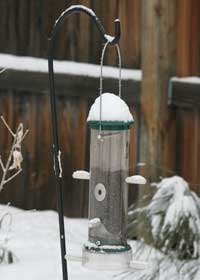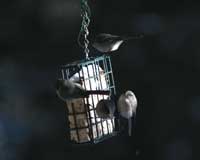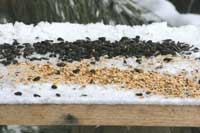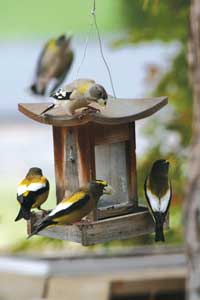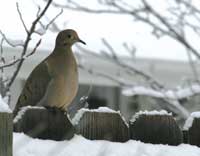Feeding wild birds seems like an inexact science. Throw out some seed and see what happens. To some degree that is correct, but go buy seed and you’ll be faced with a myriad of seed and feeder choices. Shelled or unshelled black oil sunflower seed? Suet cakes or plugs? Nyjer thistle or millet? The options are many, but then so are the rewards.
Once you’ve decided on an option(s), here are a few tips for attracting birds to your backyard.
Location, location. Place a feeder in a quiet location and where you can see the feeder from inside. If placing a feeder near a window, put it within 3 feet of the window to minimize injuries caused by collisions into the glass. If you don’t have trees nearby, plant a pole or post from which to hang a feeder. Birds also like to have some escape or hiding cover nearby, as well as for a place to perch and watch you refill their feeders.
Seed, suet and feeders. I use a variety of feeders in my yard to attract a range of birds. First, there is the suet feeder that accepts pre-made suet cakes. Made of rendered beef kidney fat and mixed with nuts, seeds or berries, these cakes attract woodpeckers, bush tits, scrub jays and nuthatches - sometimes the neighborhood dog. Birds cling to the wire suet cage as they peck away at the high-energy food.
A thistle tube feeder takes nyjer or black thistle seed which attracts pine siskins and goldfinches. The tiny feeding ports are wide enough for these slim-billed birds and keep out the larger-billed sparrows or house finches. Because the siskins and goldfinches travel in groups, don’t be surprised when several individuals, or a huge flock, show up at these feeders.
A hopper feeder is the traditional bird feeder that fills from the top and allows seeds to spread out into the feeder channels. This is my “catch all” type of feeder that attracts a variety of birds. At times, it is hovering room only.
In addition to the hanging feeders, I use a platform feeder to attract juncos, white-crowned sparrows, house finches and, hopefully, wintering evening grosbeaks. Attracting the brightly colored grosbeaks is a wintery coup – but their irruptive nature means they don’t necessarily show up every winter. The grosbeaks like the thin-shelled black oil sunflower seeds.
Water. I place a flat-bottomed water bowl, surrounded by rocks, in a sunny location. The sun melts the ice, and the attraction of open water also draws in the birds.
Pinch of science. If you want to combine some citizen science with your viewing enjoyment, the Cornell Lab of Ornithology (www.allaboutbirds.org) offers Project FeederWatch. Participants record winter visitors to their feeders. This provides a snapshot of winter bird distribution.
Researchers and volunteers have studied the seed preferences of backyard birds and now bird feeding is a multi-million dollar a year industry. There are even some high tech components involved that use web cams and radio frequency identification technology (RFID) to study feeder use. Tiny PIT tags are embedded in captured birds, and then the researchers use this microchip technology to study the frequency of visits to electronically wired bird feeders. Suddenly backyard bird feeding shines in a new light.
So if you are in need of a New Year’s resolution, how about one that brings enjoyment and ease – feeding your feathered friends this winter.
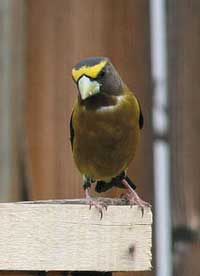 v
v 